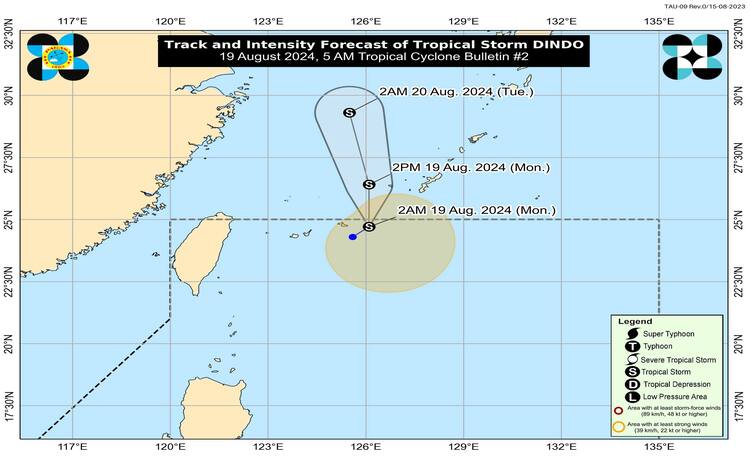Tropical Storm “Dindo” (Jongdari) has intensified from a tropical depression and is currently located 640 km northeast of Itbayat, Batanes (25.0°N, 126.1°E). According to the Philippine Atmospheric, Geophysical and Astronomical Services Administration (PAGASA), Dindo now carries maximum sustained winds of 65 km/h near its center, with gusts reaching up to 80 km/h. The storm’s central pressure is at 1000 hPa.

Tropical Storm Dindo is moving northeastward at a speed of 10 km/h. Strong to gale-force winds extend outward up to 320 km from the center, creating a broad impact zone despite the storm’s distance from land. However, no Tropical Cyclone Wind Signals (TCWS) are currently in effect, as Dindo is not expected to directly impact the weather conditions in the Philippines within the forecast period.
Though Dindo is far from directly hitting any land area, its interaction with the prevailing southwest monsoon will affect the coastal waters around Extreme Northern Luzon. Moderate seas with wave heights between 1.0 to 2.0 meters are expected in these areas. Mariners, especially those operating smaller vessels like motor bancas, are advised to take necessary precautions. Inexperienced mariners and those operating inadequately equipped vessels are strongly discouraged from venturing out to sea under these conditions.
Tropical Storm Dindo is forecasted to move generally northward, exiting the Philippine Area of Responsibility (PAR) within the next six hours. Once it leaves PAR, Dindo will track across the East China Sea, possibly heading towards the Korean Peninsula or eastern China’s coastline. PAGASA predicts that Dindo will remain a tropical storm during this time, with minimal chances of further intensification. The storm may even begin to weaken in the next 24 hours.
The public, especially those in coastal and northern regions, are encouraged to stay updated on weather bulletins issued by PAGASA. Disaster management offices and residents in areas prone to flooding and other hazards should remain vigilant and follow any instructions from local authorities. For more localized severe weather updates, PAGASA advises continuous monitoring of advisories from their Regional Services Division.
